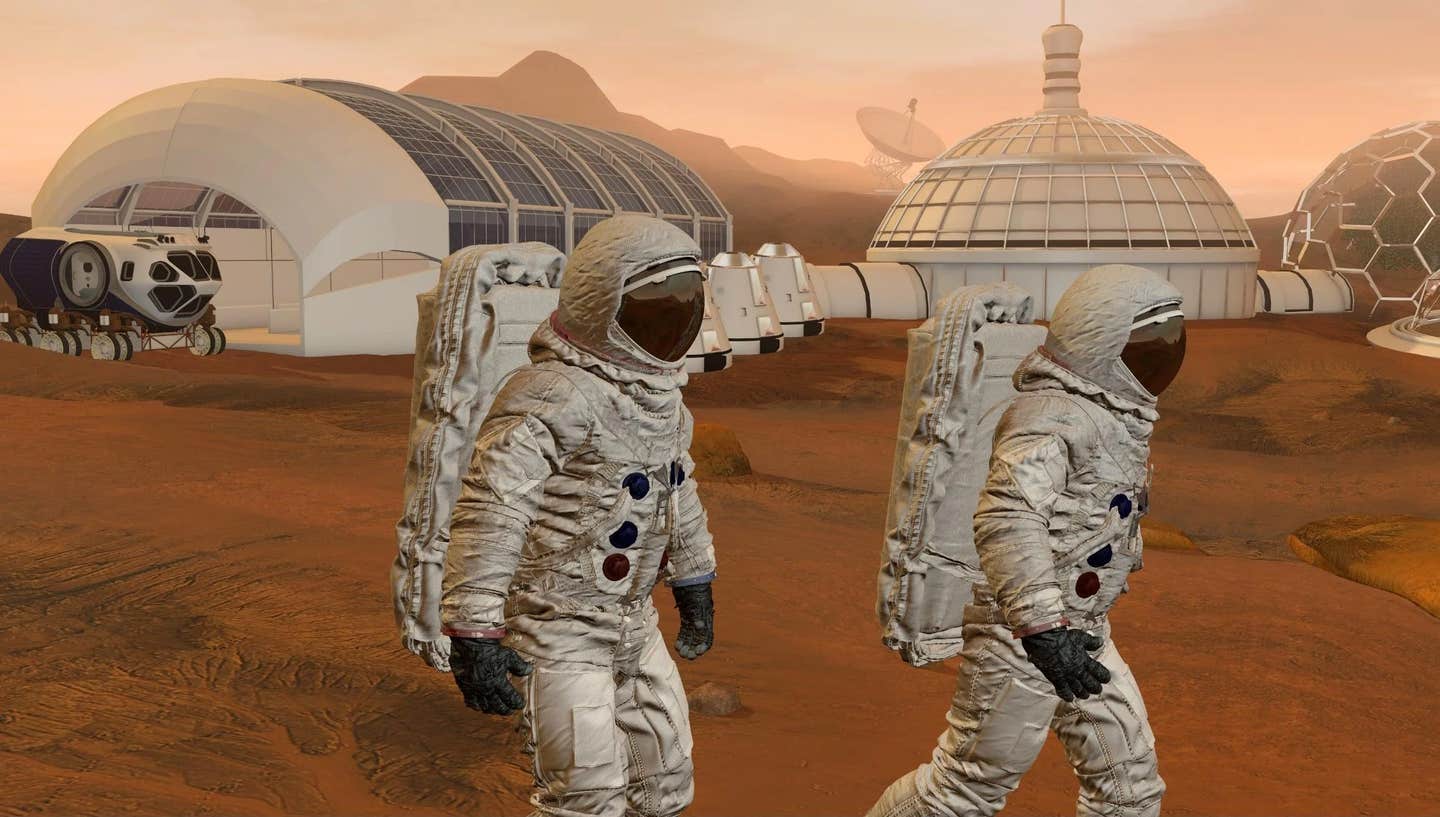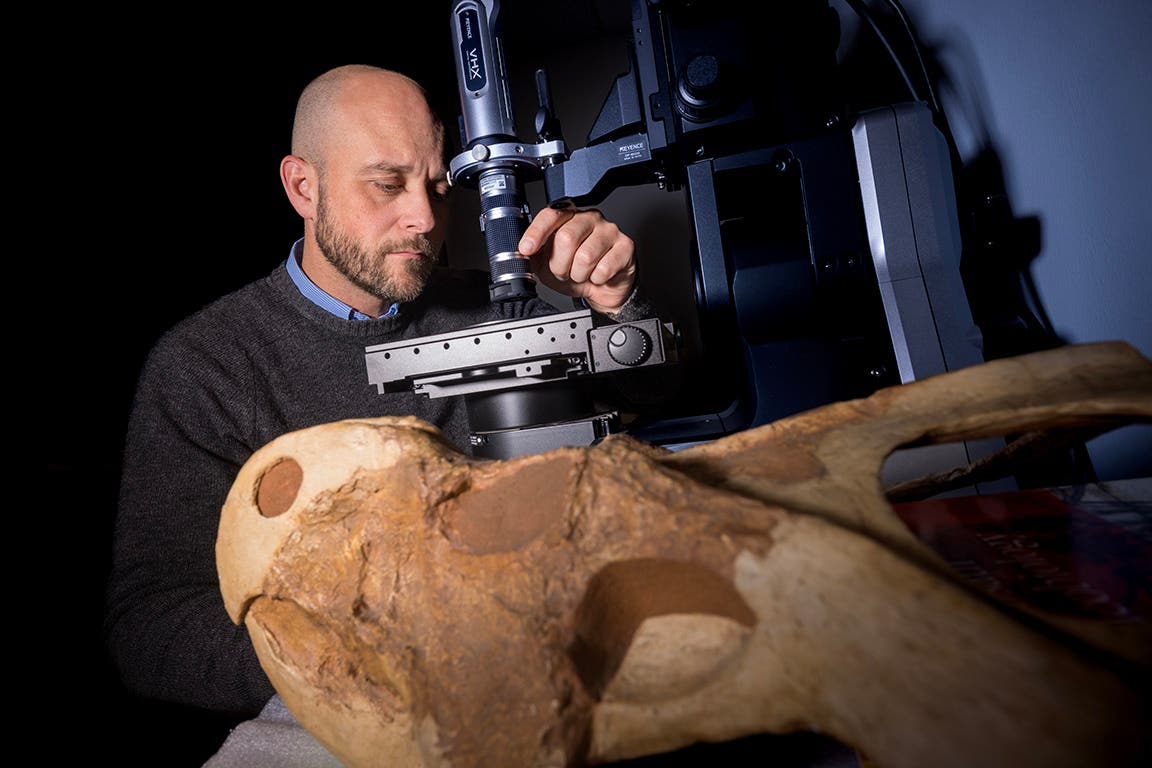Humans could colonize Mars with fewer than two dozen people, study finds
When humans embark to colonize Mars, one crucial question remains: how many people will be needed to ensure the survival of the colony?

While the technology to support human life on Mars is still evolving, some researchers have already started calculating the numbers. (CREDIT: CC BY-SA 3.0)
When humans embark on the journey to colonize Mars, one crucial question remains: how many people will be needed to ensure the survival of the colony? With the technology for Mars habitation still in development, it's not too early to consider the practicality of a Mars settlement and determine the optimal number of inhabitants required to sustain it.
Gwynne Shotwell, SpaceX's president and chief operating officer, has suggested that humans might land on the Red Planet within this decade. If this prediction holds true, then planning for a Mars colony must begin now. The scenario depicted in the 2015 sci-fi film The Martian—a tale of isolation and desperation—serves as a reminder of the challenges that such a venture might entail.
While the technology to support human life on Mars is still evolving, some researchers have already started calculating the numbers. In a 2020 research paper published in Nature, Jean-Marc Salotti, a professor of computer science at the Institut Polytechnique de Bordeaux in France, estimated that a self-sustaining colony on Mars would require 110 individuals. This estimate is based on the premise that these colonists would be able to function independently from Earth, a challenging prospect given the hostile environment of Mars.
Previous studies have proposed different numbers. For instance, a 2003 study suggested a minimum of 100 colonists, while a 2001 paper indicated that a colony of 500 people, though not necessarily a minimum, could potentially thrive on Mars' North Polar Cap. However, Salotti's figure of 110 stands out as the most recent and focused estimate.
Yet, some researchers believe that fewer people may suffice. A group of scientists from George Mason University in Fairfax, Virginia, has proposed that a Mars colony could survive with just 22 colonists. Their findings are detailed in a preprint paper titled "An Exploration of Mars Colonization with Agent-Based Modeling," authored by Edgar Arguello, Sam Carter, Cristina Grieg, Michael Hammer, Chris Prather, Clark Petri, and Anamaria Berea.
"We started our study after we saw [Salotti's] paper and we wanted to verify that number," explained Anamaria Berea, an associate professor of computational and data sciences at George Mason University and one of the paper's co-authors. Berea pointed out that Salotti's study might have overlooked the complexities of social and psychological behavior, which are crucial factors in the long-term success of a Mars colony.
Berea emphasized the importance of considering human behavior in these calculations. "We tend to often treat humans as just numbers or particles devoid of personal incentives, heterogeneity, and adaptability," she noted. "Human groups are complex systems where the outcome is not the sum of its parts, but synergistic. Any social system exhibits properties of adaptability, emergence, and non-linear dynamics."
Related Stories
One critical aspect that Berea's team included in their model, which was absent in Salotti's analysis, is the relationship between Earth and the Mars habitat. "It is hard to imagine a habitat that will be completely cut off from Earth supplies and independent from the get-go, especially in an environment that is so unsustainable for human life as Mars, even if we would have the best technology to help us there," Berea explained. She argued that the idea of sending a specific number of people to Mars and expecting them to survive without resupply from Earth is unrealistic, given the high costs associated with transporting large numbers of people into space.
In response to the George Mason study, Salotti acknowledged the differences in approach. "Twenty-two is in fact compatible with my 110 as different problems are addressed," he said in an email. "Twenty-two is acceptable when shipments from Earth are possible for resupply. It might even be lower. The problem with this kind of approach is that the results highly depend on the set of parameters, which are arbitrary."
Berea and her colleagues used agent-based modeling (ABM) to arrive at their conclusion. ABM is a class of computer simulations that models individuals, or "agents," with attributes and behaviors similar to those found in real life. "In general, with ABMs we create simulations that are representative of a complex system and phenomenon from reality, where we can track the emergence of large patterns or phenomena out of simple rules of behaviors and interactions at the micro level," Berea explained.
The team utilized past research on how crews perform under stress—such as submarine crews, Antarctic exploration teams, and soldiers in Iraq—to create data models for Martian settlers. These models included factors such as coping capacity, resilience, skill level, metabolism, and stress level, which were then integrated into the NetLogo software to simulate a Mars colony.
Each colonist in the simulation was assigned one of four psychological traits: neurotic, reactive, social, or agreeable. The simulation was run with these "virtual Martians" as they moved, slept, worked, produced or consumed resources, and interacted with one another. Without sufficient resources, the colonists' health would decline, eventually leading to death and removal from the simulation.
Every 78 weeks, a shipment from Earth might arrive, bringing four new colonists, each with unique personality traits. However, accidents during transit could increase stress levels among the colonists. One key finding from these simulations was that minimizing the number of neurotic individuals could be crucial for the colony's success.
"Martians with the 'neurotic' psychology die at a much higher rate than those of other psychologies," the paper noted, adding that agreeable personalities tend to fare better over time.
The researchers ran the simulation multiple times over a period of 28 years, experimenting with initial population sizes ranging from 10 to 170. They found that "an initial population of 22 was the minimum required to maintain a viable colony size over the long run."
"We wanted to show that if we neglect the social, behavioral, and psychological aspects of space explorations, we can err grossly in our estimations, predictions, and projections," Berea stated. She underscored the importance of considering these factors in mission planning, noting that the social and psychological dynamics of human groups could determine the success or failure of long-term space missions, as well as their economic viability.
In the quest to colonize Mars, understanding the complexities of human behavior may prove to be just as critical as technological advancements. The success of a Mars colony will likely depend not only on how many people are sent but also on how well they can work together to overcome the challenges of life on another planet.
Note: Materials provided above by The Brighter Side of News. Content may be edited for style and length.
Like these kind of feel good stories? Get The Brighter Side of News' newsletter.



